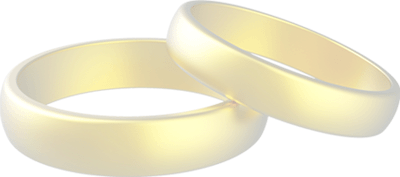Tiananmen Square – 11July18
Tiananmen Square is not just your ordinary park. It is replete with history, history that shook not only China but the whole world. Tiananmen Square (which literally means “Gate of Heavenly Peace”) sits right at the heart of the city of Beijing and is an important tourist spot. Built in 1417 during the Ming Dynasty, it was the site where ceremonies of state were celebrated. Here, emperors made their important pronouncements and edicts before the people of China.
The area was originally smaller, but it was enlarged to its current size in 1949. It now has an area of 440,000 square meters, which makes it the largest open air urban square in the world. The square is a relaxing place. Its flower-filled gardens and wide open spaces are ideal for flying kites, taking a walk or just relaxing with loved ones and friends.
There are just so many things you can see at Tiananmen Square! There is the Tiananmen Tower, the Great Hall of the People, the Monument to the People’s Heroes and the Mao Zedong Memorial. The square is also the gateway to the Forbidden City.
The Tiananmen Tower was erected in 1417 during the Ming Dynasty. No one was allowed inside the Tower except for the royal family and nobility. This went on until 1911, when the last feudal kingdom ended.
Another important building in Tiananmen Square is the Great Hall of the People. It was used as a meeting place for political and diplomatic affairs. Constructed in 1959, it includes a Central Hall, a Banqueting Hall and the Great Auditorium. Across the Great Hall on the east side of the square stands the China National Museum, This building holds both the Chinese Revolutionary Museum and Chinese History Museum. The Chinese Revolutionary Museum features the growth and development of the history of China during the modern times. Meanwhile, the Chinese History Museum features China’s ancient history and contains artifacts spanning close to 2 million years, starting from before the foundation of the Chinese civilization until 1921 (the year the last emperor left the throne).
At the center of the Tiananmen Square, you can see the Monument to the People’s Heroes, which is prominently composed of a 38-meter obelisk surrounded by huge granite sculptures. It was built in honor of the men and women who gave their lives for the revolutionary struggle that figured in China’s history during the 19th and 20th century. The sculptures are surrounded by white marble railings. Chairman Mao had the monument (the largest of its kind in the whole of China) built in 1952.
A memorial hall dedicated to the Chairman Mao stands at the south of the Square. The Mao Zedong Memorial Hall was completed on May 1977. The memorial houses the Mourning Hall (where the Chairman, dressed in his signature gray suit, lies in a crystal coffin), the Northern Hall (which has a tapestry of the landscape of China, plus a white marble statue of the Chairman) and the Southern Hall (where you can read his poems). The hall is open Tuesdays to Sundays. During July and August, it opens only in the morning.
Another must-see spot in the Tiananmen Square is the raising of the Five Star Red Flag, the Chinese national flag. PLA soldiers raise the flag at sunrise and lower it at sunset everyday. Come at the square early (before sunrise) so that you make sure you get a good vantage point. There is quite a crowd gathered at the square to watch this event every morning.
Tiananmen Square holds a lot of historical significance. This is where Mao Zedong proclaimed the establishment of the People’s Republic of China on October 1, 1949. There are also yearly military parades and displays. The square was also a site for many a rally and protest movement. Sadly commemorated lately, was the students protest in 1989, which unfortunately resulted in the deaths of protesters by the regime.
Source: http://www.goparoo.com/asia/china/beijing/attractions/tiananmen-square/
Although hotels and resorts in Manila offer nice venues, function rooms and ballrooms suitable for wedding receptions, a lot of wedding couples prefer outdoor and garden style venues that are near Manila. Wedding couples like the idea of a getaway to travel out of town from Manila to the north and book beautiful outdoor venues in highly recommended top rated hotels and resorts. One of the most frequently visited destinations is Clark, Pampanga, Philippines. Clark offers a number of very nice wedding and reception venues. Clark even has a nice church and a few chapels for wedding ceremonies.
Adding to the charm and attractiveness of wedding venues, resorts and hotels in Clark Philippines are certain unique factors including safety, a keen sense of security and privacy that the main zone of Clark Freeport Zone offers. Angeles Philippines, Subic or Manila cannot offer the same sense of security like Clark Philippines for wedding couples. Brides and grooms are especially concerned about safety issues and security for their guests also.
www.philippinesweddingvenue.com
Philippines Wedding Venues Service Center
Creekside Road corner of Centennial Road,
Central Business District, Clark Freeport Zone,
Pampanga, Philippines 2023
Tel: (045)599-5949 0917-520-4403 0922-870-5177
Manila Sales Office
3003C East Tower, Phil Stock Exchange Center,
Exchange Rd Ortigas Metro Manila, Philippines 1605
(632) 637-5019 0917-520-4393 Rea or Chay
Email: Wedding@Yats-International.com
For any assistance in planning and organizing a wedding ceremony, indoor or outdoor garden reception or to find other wedding service providers, Click here to contact us click here
For assistance in hotel and resort bookings in Clark, Pampanga, Philippines, log on to
http://www.HotelClarkPhilippines.com
To inquire with the highly recommended beach resort hotel in Clark Pampanga visit http://www.ClearwaterPhililippines.com
For more information about Clark, Pampanga, Philippines log on to
http://www.ClarkPhilippines.com









